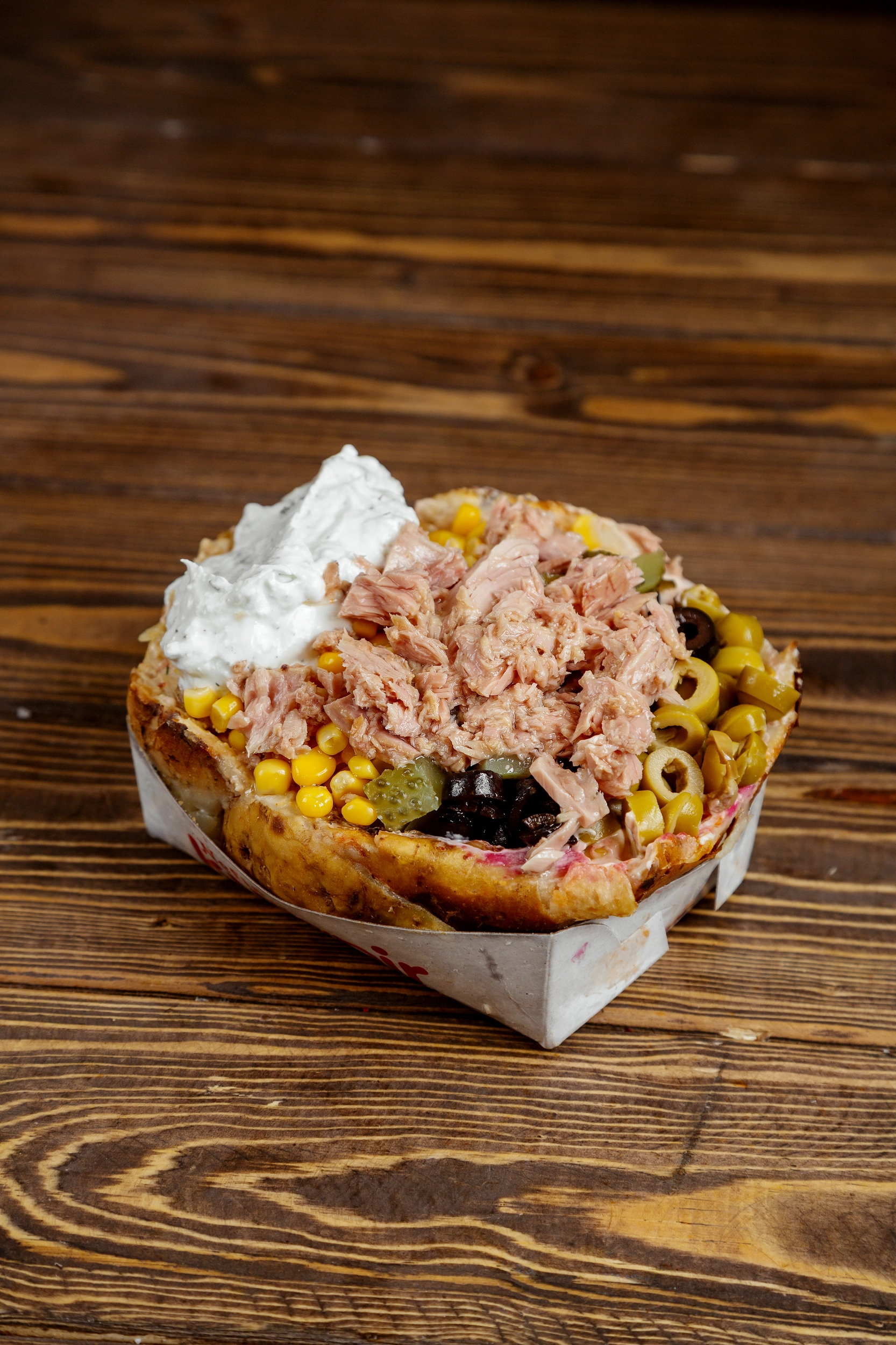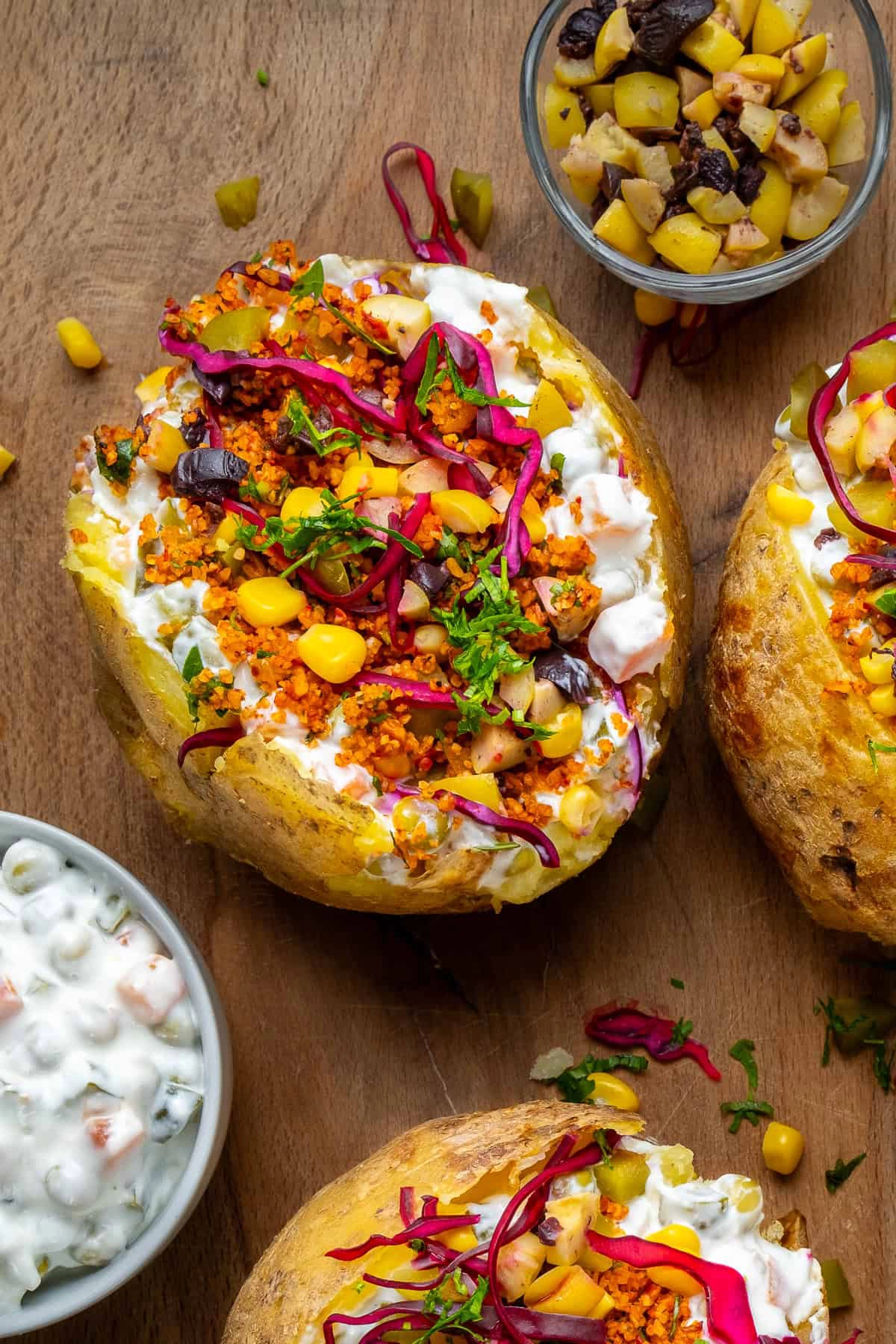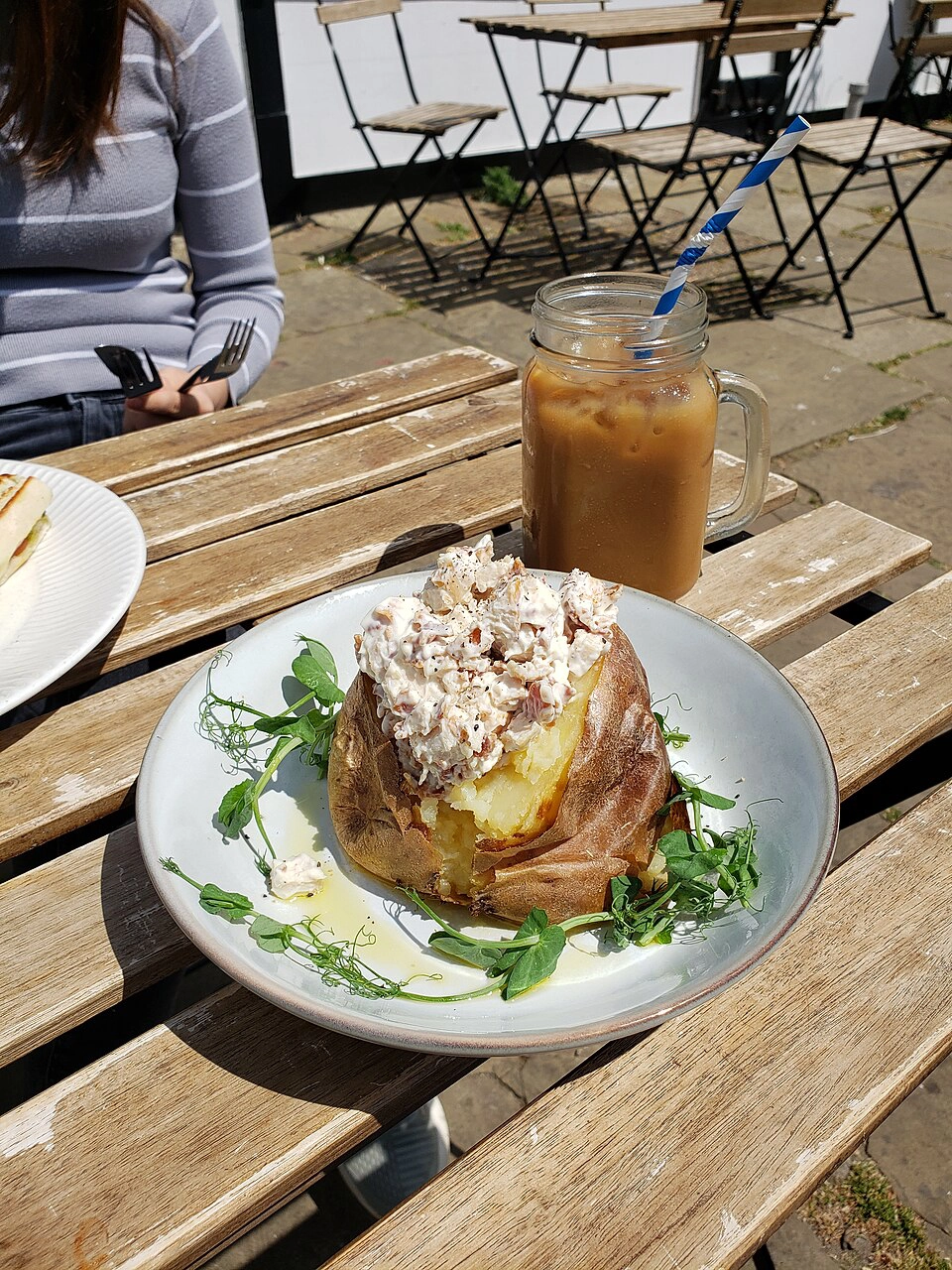
The History of Kumpir: From Turkish Streets to Your Plate
From a buttered baked potato to a customizable street-food icon, Kumpir’s story blends Ottoman comfort with modern fast-casual flair.
- kumpir
- history
- street food
- turkish cuisine
Kumpir is Turkey’s take on the ultimate loaded baked potato.
A giant, fluffy spud is roasted until its skin turns crisp, split open, whipped with butter and melting kaşar cheese, then piled high with tangy, crunchy, and creamy toppings.
What began as humble comfort food has evolved into a street-food star. You’ll spot Kumpir on seaside promenades and busy squares across Turkey—and increasingly in European markets and food stalls worldwide.

What Is Kumpir?
At its core, Kumpir starts with a large starchy potato. Vendors bake it in special ovens, then mash the potato flesh right inside the skin with generous butter and shredded kaşar (a mild, stretchy Turkish cheese).
The base is creamy and savory, ready to carry a spectrum of toppings: pickles, sweetcorn, olives, Russian salad, sucuk (spicy sausage), sautéed mushrooms, jalapeños, and sauces ranging from ketchup to garlicky mayo.
The neighborhood of Ortaköy in Istanbul is the birthplace of modern Kumpir culture. Stalls with glass counters display dozens of toppings, and lines of locals and tourists stretch down the Bosphorus promenade.
From Ortaköy to Everywhere
Loaded potatoes exist in many cuisines, but Istanbul made Kumpir iconic.
From Ortaköy, the trend spread across Turkey in the 1990s and 2000s. Through Turkish diaspora communities, it later reached Europe and beyond, becoming a recognizable part of global street-food culture.
How It’s Made (Step by Step)
- Bake: Choose large baking potatoes. Scrub, dry, and roast at 200 °C / 390 °F for 60–75 minutes until the skin is crisp and the inside soft.
- Whip: Slice lengthwise. Add 1–2 tbsp butter and a handful of shredded kaşar (or mozzarella + mild cheddar). Mash until silky inside the skin.
- Load: Layer toppings—start with crunchy/sour (pickles, corn), then proteins (beans, tuna, sucuk), then creamy salads or sauces.
- Finish: Season with salt, pepper, chili flakes, and drizzle with ketchup, mayo, yogurt-garlic, or spicy sauce.
For vegetarian depth, add sautéed mushrooms and a spoon of smoky red pepper paste (biber salçası).
For a lighter version, swap some butter with thick yogurt.
Popular Toppings
- Pickled red cabbage, gherkins, green olives
- Sweetcorn, peas, jalapeños
- Russian salad (olivye-style), coleslaw, or beet salad
- Sucuk or pastırma (air-dried beef)
- Tuna, white beans, or chickpeas
- Melted cheese, yogurt-garlic sauce, chili oil
Regional Twists
- Balkans: Ajvar, kajmak, grilled peppers
- Middle East: Tahini, sumac onions, spicy schug
- Western Europe: Bacon bits, cheddar, baked beans
- Health-leaning: Roasted veg, feta, herby yogurt, pomegranate
Why It Endures
Kumpir delivers comfort and customization in one handheld package.
It’s familiar yet flexible, fast yet freshly assembled.
Whether you keep it classic with butter, cheese, pickles, and corn—or go maximalist with a dozen toppings—Kumpir is about balance: creamy, crunchy, tangy, and hot in every bite.

Photos: In-house images.
Related posts
Kumpir in San Lorenzo: The Ultimate Loaded Potato in Rome
Craving loaded potatoes in Rome? Discover Kumpir in San Lorenzo—creamy, customizable, and perfect for a quick, satisfying bite near the heart of the city.
Kumpir vs. Loaded Potatoes: What Makes the Turkish Classic Stand Out in Rome
Kumpir takes loaded potatoes further: a whipped, buttery base with bold toppings. Here’s how it wins hearts in Rome, especially around San Lorenzo.
Loaded Potatoes in Rome: Your Guide to Kumpir Toppings in San Lorenzo
Searching for loaded potatoes in Rome? Build your dream Kumpir in San Lorenzo with classic, protein‑packed, and veggie‑forward topping combos.